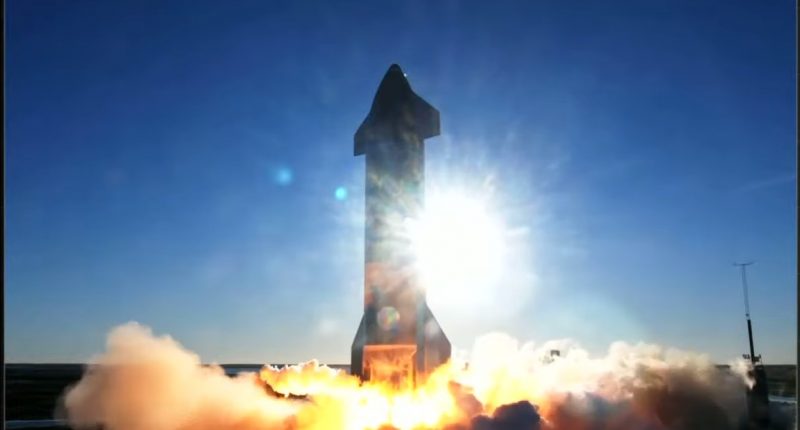The full-scale prototype of SpaceX’s Starship flew 40,000ft into the air from south Texas on Wednesday, but the 6 1/2-minute test flight ended in an intense blast at touchdown.
Regardless of the loss of the spacecraft, the flight was deemed a major success. During the live stream, the dispatch showed the on-screen message “Amazing TEST. Congratulations STARSHIP TEAM!” SpaceX CEO Elon Musk too, in a positive note, was thrilled.
Mars, here we come!!
— Elon Musk (@elonmusk) December 9, 2020
Earlier this week, Musk had tweeted that he expected the Starship prototype “SN8” to reach its target flight height and nothing much beyond that.
Amazon’s Jeff Bezos, who set up the Blue Origin rocket company, advanced swift congratulations.
“Anybody who knows how hard this stuff is is impressed by today’s Starship test.”
The test launch took off and soared in a seemingly straight line, before one and then another of its engines went out. After 4 minutes and 45 seconds of flight, its third engine terminated, and the rocket initiated its descent in its position. The engines were restarted just seconds before landing to slow the ship, but it collided into the Earth.
Still, it was considered progress in SpaceX’s development efforts. Earlier prototypes collapsed without ever leaving the ground during tests that simply pumped ultracold liquid propellants into the rocket’s tanks.
After numerous cancelled attempts this week, the flight was livestreamed on the @SpaceX Twitter account.
The test flight was anticipated to test SN8 (Starship number 8) and its three engines for their aerodynamism, including during the ship’s descend to Earth, which happens vertically, in the same sense as SpaceX’s Falcon 9 rocket.
SpaceX has reserved its first private mission to the moon for the Japanese fashion and art mogul Yusaku Maezawa. They’re seeking to take that flight in 2023. And 2024 is when Elon Musk hopes to send off the company’s first spacecraft to Mars. He’s hoping to take people there by 2027, with the aspiring goal of one day colonizing the Red Planet.





